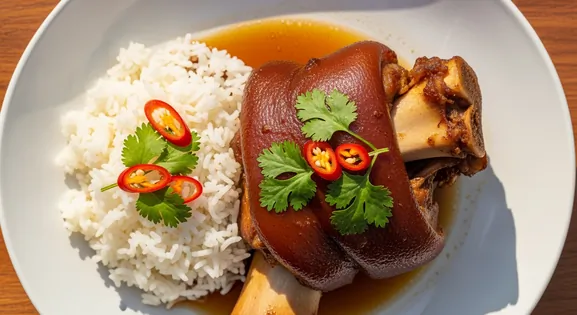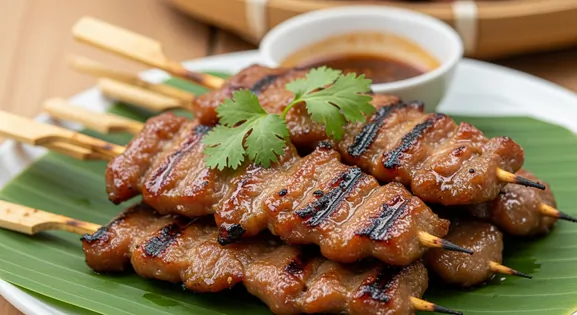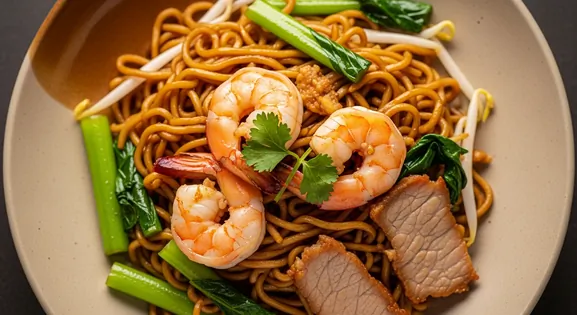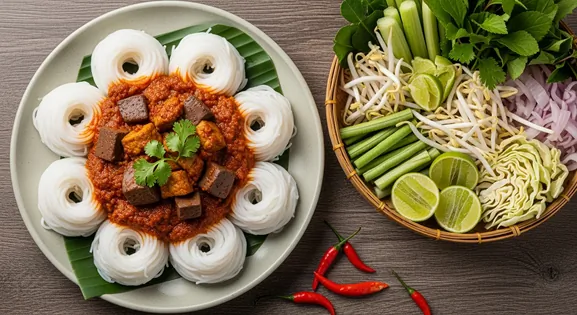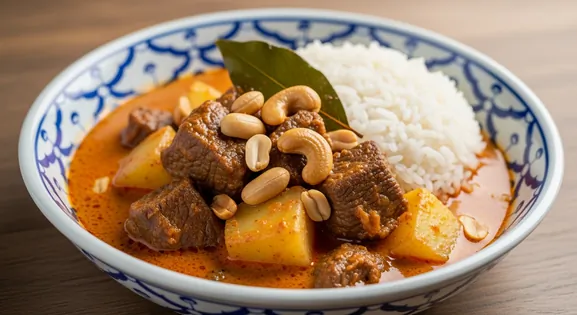Fried Soft Shell Crab in Phuket
ปูนิ่มทอด (Poo Nim Tod)
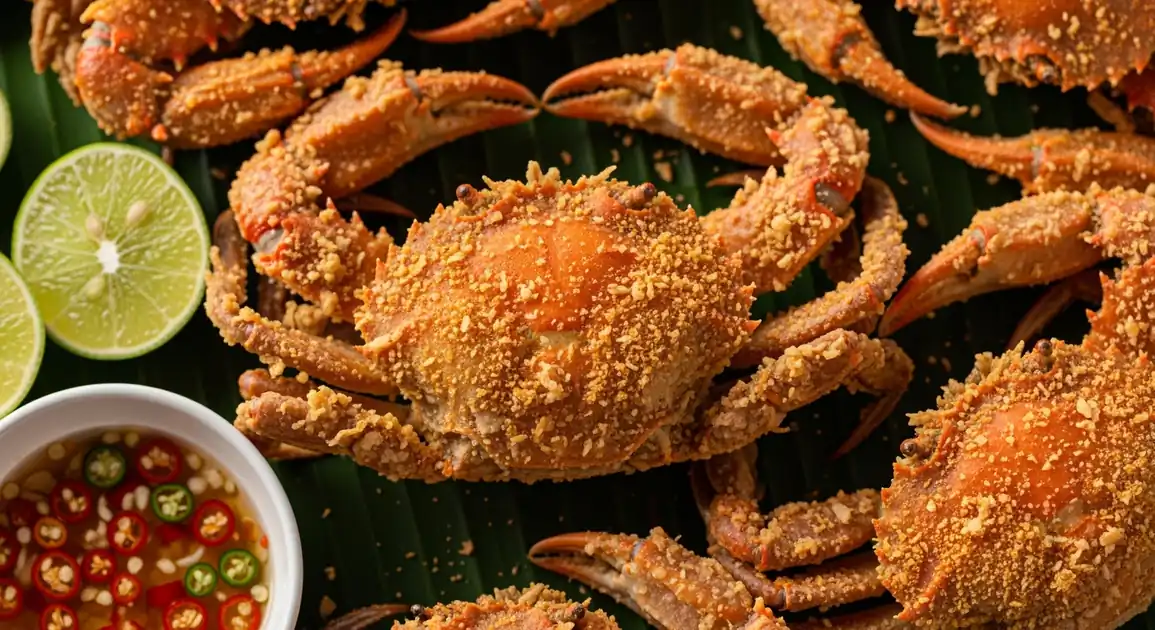
A Guide to the Local Experience
In Phuket, the quest for perfect fried soft shell crab leads to vibrant markets and seaside eateries. This island specialty, with its delicate crunch and sweet meat, is a must-try. Prepare for a culinary adventure that captures the essence of Andaman Sea flavors.
New to Fried Soft Shell Crab? Learn all about its history in our complete guide.
Unlocking the Secrets of a Great Meal
Head to Rawai Seafood Market in the late afternoon (around 4 PM) when fishing boats return. You'll get the freshest selection of soft shell crabs directly from the fishermen.
Don't limit yourself to beach areas. Phuket Town has excellent, often more authentic, local restaurants serving fried soft shell crab with unique Peranakan influences.
This specifies fried soft shell crab with garlic, a popular and delicious preparation in Phuket that enhances the crab's natural sweetness.
A Traveler's Checklist
What to Look For
-
Vendors at Rawai Seafood Market or reputable seafood restaurants cooking crab fresh to order.
Ensures crab is cooked thoroughly from fresh/live state, crucial for safety and quality.
-
Live crabs in tanks or fresh-looking crabs on clean ice beds.
Visual check for freshness before cooking. Crabs should look lively or bright and firm on ice.
-
Clean, hot frying oil (bubbling vigorously when crab is added).
Proper frying temperature ensures quick cooking and kills potential bacteria.
-
Separate handling of raw and cooked crabs, often using different tongs or gloves.
Prevents cross-contamination, especially important with seafood.
What to avoid
-
Stalls in busy tourist areas (e.g., Patong) selling pre-fried crabs sitting under heat lamps or at room temperature.
High risk of bacterial growth and poor quality (soggy crab).
-
Crabs that smell strongly of ammonia or have a noticeable 'fishy' odor.
Clear signs of spoilage; do not consume.
-
Vendors using dark, dirty, or smoking oil for frying.
Affects taste and potentially safety (carcinogens from burnt oil).
-
Crabs that look dull, mushy, or discolored before cooking.
These visual cues strongly indicate that the crab is not fresh and may have begun to spoil, affecting both taste and safety.
Ordering Like a Local
When ordering fried soft shell crab in Phuket, especially at markets like Rawai, confirm the price per piece or weight before cooking. Specify "mai phet" (not spicy) for the accompanying seafood sauce if you prefer a milder flavor, as local sauces can be fiery. At restaurants, ask if the crab is "sod" (fresh) to ensure you're getting the best quality. Don't hesitate to point to the live crabs if available to ensure your selection.
Where to Find Fried Soft Shell Crab in Phuket
Rawai Seafood Market
A must-visit authentic seafood experience where you can select live seafood and have it cooked at adjacent restaurants. Known for extremely fresh soft shell crab.
Rawai Beach, Sea Gypsy Village
Late Afternoon, Evening
Patong Beach Area
Tourist-friendly seafood restaurants with English menus and various preparations of soft shell crab, from traditional to fusion styles.
Bangla Road, Patong Beach Road
Dinner, Late Night
Bang Pae Seafood
Local favorite on the east coast with mangrove views, known for authentic preparation and reasonable prices.
Bang Pae Waterfall, East Coast Road
Lunch, Early Dinner
Phuket Town Night Markets
Various night markets including Weekend Night Market and Chillva Market feature seafood stalls with affordable soft shell crab options.
Phuket Weekend Market, Chillva Market
Evening, Night
Vendor Tips
- At Rawai, you can select your own crab and negotiate prices before cooking.
- Ask for 'mai phet' if you want non-spicy dipping sauce, as Phuket seafood sauces tend to be quite spicy.
- Check if the price is per piece or per weight, especially in tourist areas where misunderstandings can lead to unexpectedly high bills.
- Look for restaurants displaying 'We Cook, You Enjoy' signs, indicating seafood safety awareness for tourists.
Know Before You Go
Dietary Information
Important Note for Travelers: Your safety is our priority. Below are the common allergens associated with the traditional preparation of this dish. However, recipes and ingredients can vary significantly between establishments. Always confirm all ingredients directly with the food vendor before ordering, especially if you have a severe allergy.
Potential Allergens
Dietary Suitability
Price Guide
Budget Tips
- Local seafood markets like Rawai and Bang Pae offer better prices (180-300 THB) than tourist-oriented restaurants.
- Prices in Patong Beach and other major tourist areas can be 40-100% higher than local spots.
- Some night markets like Chillva Market or Weekend Night Market have affordable options.
- Seafood restaurants often offer set meals including soft shell crab that provide better value than à la carte ordering.
Serving & Seasonality
In Phuket, presentation is often enhanced. Expect decorative plates, garnishes like carved vegetables, and multiple dipping sauces. More upscale venues may serve it on hot plates or with special lighting for dramatic effect.Best Times to Enjoy
- Dinner: The prime time for seafood in Phuket is dinner (6 PM - 9 PM) when restaurants and markets are in full swing.
- Late Afternoon: Many seafood markets like Rawai begin serving around 4 PM when fishing boats return.
Seasonal Availability
Available year-round, though slightly more abundant during the dry season (November-April) when fishing conditions are optimal.
The Role of Fried Soft Shell Crab in Local Culture
Local Significance
Phuket's identity is deeply tied to its seafood. As an island with strong Chinese-Thai influences (Peranakan), seafood preparation combines Thai, Chinese, and sometimes Western techniques, creating a unique local style.
Eating Customs
- In Phuket, beer is the most common pairing with seafood, particularly Singha or Leo brands.
- Local etiquette appreciates if you consume the entire crab rather than picking at parts, as soft shell crab is meant to be eaten whole.
- Unlike some Western dining, Thais rarely use lemon with seafood, preferring lime for its more intense flavor.
Local Styles of Fried Soft Shell Crab
Phuket-Style Curry Crab
Incorporates southern Thai curry influences with additional turmeric and sometimes a touch of coconut milk in the batter, giving a distinct yellow color and richer flavor.
Chinese-Thai Fusion Crab
Reflecting Phuket's Peranakan heritage, this variation might include five-spice powder in the batter and be served with a tangy tamarind-based dipping sauce instead of the typical Thai seafood sauce.
Andaman Salt Crust Crab
A specialty using locally harvested Andaman Sea salt to create a delicate salt crust on the exterior, enhancing the crab's natural sweetness.
Phuket Tourist-Friendly Version
Versions found in tourist areas often feature larger portion sizes, less spicy accompaniments, and sometimes Western-influenced presentations like serving with french fries or aioli.
Step-by-Step Guides
Selecting the Best Poo Nim Tod at Rawai Seafood Market
Choose and order delicious fried soft shell crab at Phuket's famous seafood market.
- Walk along the vendor stalls opposite the restaurants to choose your live/fresh seafood first.
- Select crabs that are lively in tanks or look bright, firm, and smell fresh on ice.
- Negotiate the price per kilogram for the crab.
- Take your purchased crab across the road to one of the restaurants that offer cooking services ('rap tam ahan').
- Specify you want it fried ('tod kratiem' - with garlic is popular) and confirm the cooking charge.
Ordering Fried Soft Shell Crab in Phuket Restaurants
Learn the nuances of ordering this beloved delicacy in various Phuket eateries, ensuring a fresh and authentic culinary experience tailored to your preferences.
- Look for 'Poo Nim Tod Kratiem' (Fried Soft Shell Crab with Garlic) or similar on the menu.
- Confirm with staff that the crab is fresh (some places use frozen). Ask 'poo nim sod mai?' (Is the soft shell crab fresh?).
- Specify your preferred spice level for the dipping sauce ('nam jim seafood') if offered options ('ped noi' - less spicy, 'ped maak' - very spicy).
- Observe other tables – does the crab look crispy and freshly fried?
- Consider restaurants in Phuket Town or near fishing villages for potentially more authentic/fresh options compared to purely tourist hubs.
Our Commitment to Quality
At Tasteplorers, our mission is to provide the most accurate and useful travel information in the world. To achieve this, all content on this site is created through our unique editorial framework. We utilize leading AI research tools, guided by our proprietary prompts, and a multi-stage validation process. This entire system is overseen by our editorial team to ensure everything we publish meets our high standards for accuracy, cultural nuance, and practical value for travelers.
Learn more about our Editorial Process and our Mission.
Countries
Explore regions
Europe
Discover Europe's diverse culinary landscape, from Mediterranean flavors to hearty Alpine fare. Learn to navigate markets, decode menus, and eat like a local.
Latin America & Caribbean
Discover the vibrant cuisines of Latin America & the Caribbean. Our expert guide covers everything from Mexican street food to Peruvian ceviche and market tips.
Oceania
Explore Oceania's diverse food scene. Learn about Polynesian earth ovens, Fijian feasts, and the vibrant café culture of Australia and New Zealand.
Southeast Asia
Explore Southeast Asia's diverse food cultures from Thailand to Vietnam. Get expert tips on navigating spice levels, choosing quality vendors, and understanding the rich traditions of the region.
